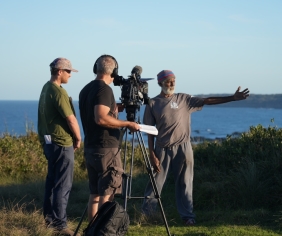The toolkit provides additional technical information to help councils to meet the requirements of the Coastal Management Act 2016 (CM Act), the State Environmental Planning Policy (Coastal Management) 2018 and the coastal management manual (the manual).
The toolkit contains links to additional resources that councils may find useful in preparing and implementing a coastal management program (CMP).
The toolkit will be updated as new information becomes available.
Key guidelines to support preparation of coastal management programs
Community and stakeholder engagement
The Community and stakeholder engagement guidelines provide advice to assist councils to identify stakeholders, establish engagement outcomes, appropriate engagement methods and tools and the importance of processes that strengthen relationships and trust. A list of relevant engagement references is included.
Risk-based framework for considering waterway health
This Risk-based framework for considering waterway health outcomes in strategic land-use planning decisions provides information to assist councils to consider the potential impacts of land-use change on a coastal waterway, evaluate risks and identify appropriate management responses.
Integrating the risk-based framework with your coastal management program
Integrating the risk-based framework with your coastal management program summarises where the key tasks to deliver the 5 steps of the Risk-based framework for considering waterway health outcomes in strategic land-use planning decisions overlap or directly align with the guidance for the 5 stages of developing a coastal management program.
Management options
The Management options guideline provides additional advice on potential management options that can be used to reduce risks and foster opportunities in each of the four coastal management areas.
Using cost-benefit analysis to assess coastal management options
The guidelines for using cost-benefit analysis to assess coastal management options provides advice to councils on the use of cost-benefit analysis for evaluating the viability of coastal management options and determining how costs could be allocated.
Preparing a coastal zone emergency action subplan
The guidelines for preparing a coastal zone emergency action subplan contains additional information that councils may find useful when preparing a coastal zone emergency management subplan (CZEAS) under the CM Act.
Floodplain risk management
These guidelines assist councils to consider interactions between catchment flooding and oceanic inundation.
- Floodplain Risk Management Guide: Modelling the Interaction of Catchment Flooding and Oceanic Inundation in Coastal Waterways (PDF 926KB)
- Examples of using the Guide (PDF 620KB)
- Template for documenting methods and assumptions when using the Guide (DOC 81KB)
- Hourly water level data to support using the Guide (XLS 48KB)
Landslide risk management
This additional information and guidance assists councils consider the risks of slope instability on coastal cliffs and bluffs.
- The Australian Geomechanics Society guidelines (PDF 1.2MB)
- A National Landslide Risk Management Framework for Australia (2007) (PDF 754KB)
- Landslide Risk Management Concepts and Guidelines (2000) (PDF 877KB)
Coastal Management Program Checklist
The checklist is a simple tool that enables councils and consultants to assess a Coastal Management Program against the statutory requirements of the Coastal Management Act 2016 and mandatory requirements of the Coastal Management Manual 2018 (Part A). This will assist in the preparation and review of Coastal Management Programs.
Coastal Management Programs and integration with catchment management
This coastal management programs and integration with catchment management document provides advice to councils that are developing Coastal Management Programs and ways in which broader catchment management objectives and actions, which reside outside the coastal zone, may be considered and integrated.
Marine Estate Management Strategy
The NSW Marine Estate Management Strategy 2018–2028 (PDF 12.3MB) is a framework for the NSW Government to coordinate the management of the marine estate between 2018 and 2028. The strategy identifies actions to address statewide priority threats to the marine estate.
Coastal management programs are strongly aligned with improving outcomes for the marine estate and support the objectives of the Marine Estate Management Act 2014.
Additional information that may assist councils preparing coastal management programs is available on the NSW Marine Estate website, including:
- answers about the strategy for local government
- ideas for integrating the strategy and coastal management programs (PDF 209KB)
- the NSW Marine Estate Threat and Risk Assessment
- information about the strategy initiatives and projects
- current strategy implementation plans
- progress reports, which provide updates on implementation progress and outputs
- detail on how progress is monitored
- other relevant strategy materials.
The Marine Estate Management Authority produces regular marine estate newsletters, and council staff are encouraged to register their details to stay informed.
Glossary of coastal management and planning terms
This glossary includes definitions of terms that are in common use when describing coastal environments, coastal processes and hazards, and coastal management.


